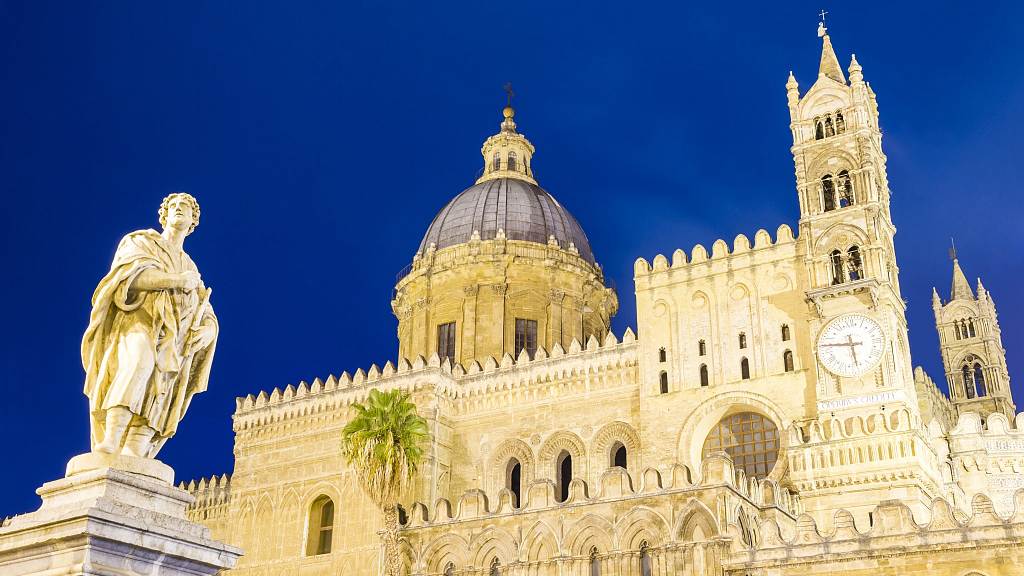"To have seen Italy without having seen Sicily is not to have seen Italy at all, for Sicily is the clue to everything." So wrote Johann Wolfgang Von Goethe after he arrived at Palermo, the capital of Sicily, in 1787. As the largest province of Italy, Sicily is a volcanic island in the Mediterranean Sea also known as the pearl of the Mediterranean Sea.
China and Italy are the two countries with the largest number of UNESCO world heritage sites and boast rich cultural and tourism resources, Chinese President Xi Jinping said in his signed article published in leading Italian newspaper Corriere della Sera ahead of his state visit to the country. As the capital of Sicily, Palermo carries the essence of Sicilian culture. Follow CGTN and discover what treasures the city has.
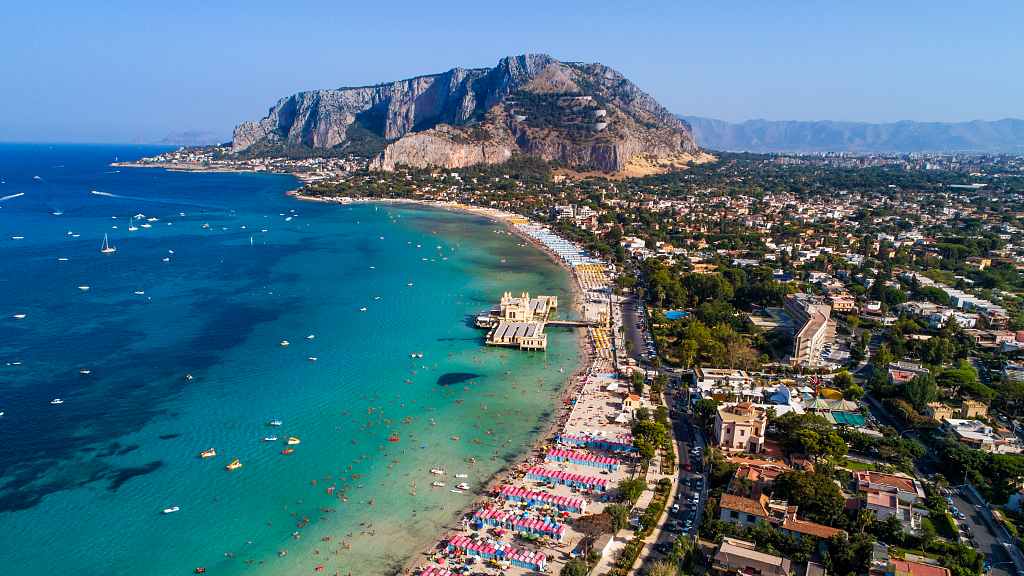
An aerial view of the seashore in Palermo City, Sicily, Italy. /VCG Photo
An aerial view of the seashore in Palermo City, Sicily, Italy. /VCG Photo
Palermo Cathedral
The Palermo Cathedral is the cathedral of the Roman Catholic Archdiocese of Palermo. Due to a long history of additions, alterations and restorations, it is characterized by different architectural styles. The church was erected in 1184 and completed in the 18th century.
The most interesting thing in the church is the twelve zodiac signs on the ground. There are twelve zodiac signs made of marble on both sides of the copper line. It is said that light from the dome of the church shines onto the copper wires and moves between the constellations in different months.
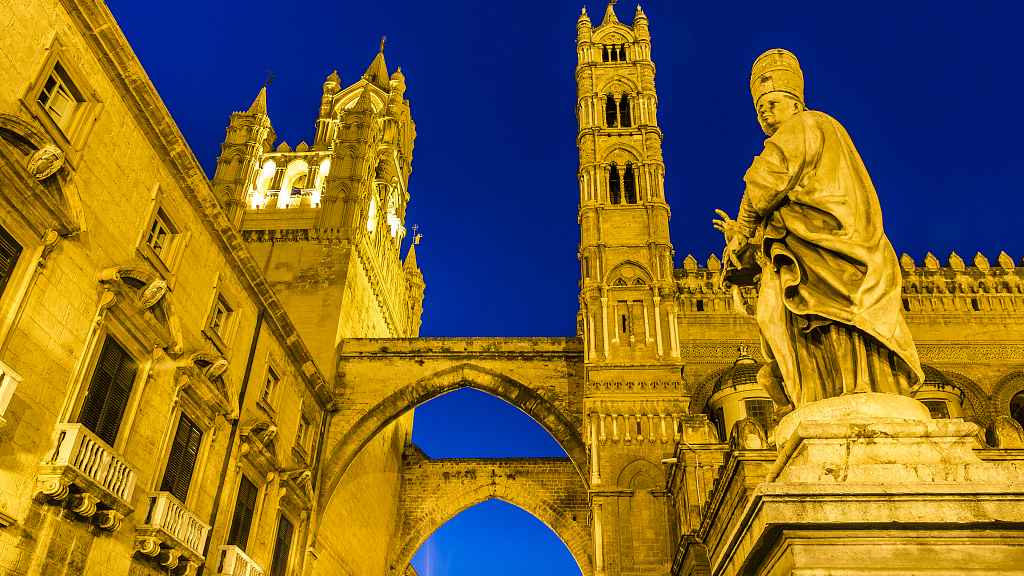
Night view of the Palermo Cathedral in Palermo City, Sicily, Italy. /VCG Photo
Night view of the Palermo Cathedral in Palermo City, Sicily, Italy. /VCG Photo
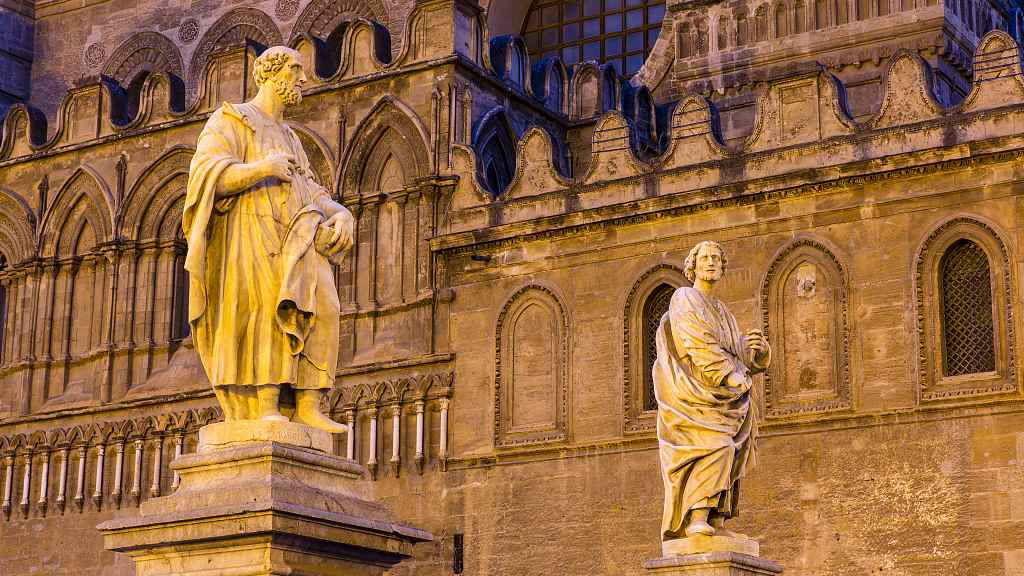
Statues of the Palermo Cathedral in Palermo City, Sicily, Italy. /VCG Photo
Statues of the Palermo Cathedral in Palermo City, Sicily, Italy. /VCG Photo
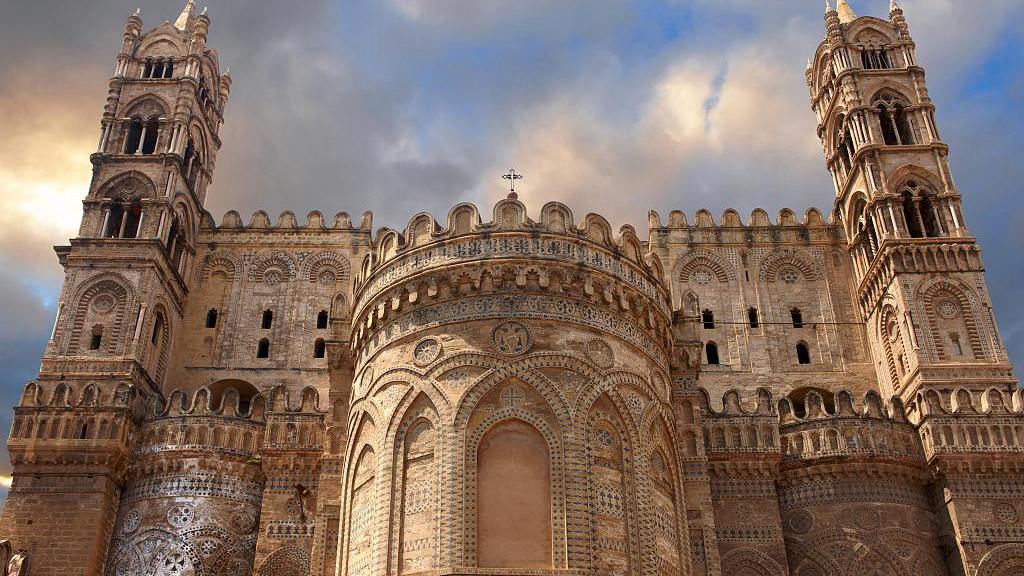
The Palermo Cathedral in Palermo City, Sicily, Italy. /VCG Photo
The Palermo Cathedral in Palermo City, Sicily, Italy. /VCG Photo
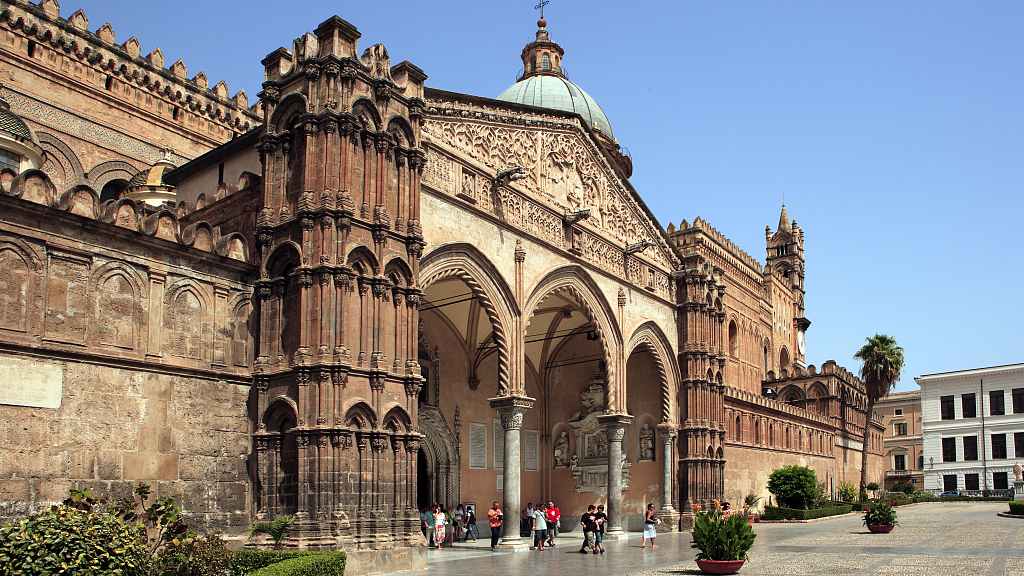
The Palermo Cathedral in Palermo City, Sicily, Italy. /VCG Photo
The Palermo Cathedral in Palermo City, Sicily, Italy. /VCG Photo
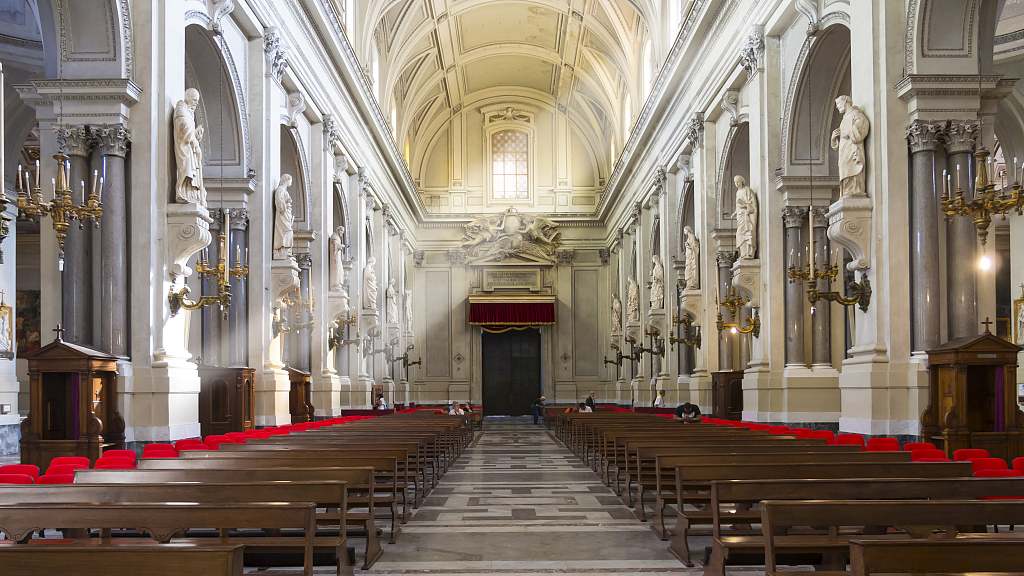
The interior view of the Palermo Cathedral in Palermo City, Sicily, Italy. /VCG Photo
The interior view of the Palermo Cathedral in Palermo City, Sicily, Italy. /VCG Photo
Pretoria Fountain
The Pretoria Fountain is a monumental fountain of Palermo built in 1554. It is located in the heart of the city with more than 20 plaster figures of nude mythological river gods and fairies surrounded.
Between 18th and 19th century, the fountain was considered as a depiction of the corrupt municipality of Palermo. For this reason and because of the nudity of the statues, the square became known as "Piazza della Vergogna" (Square of Shame).
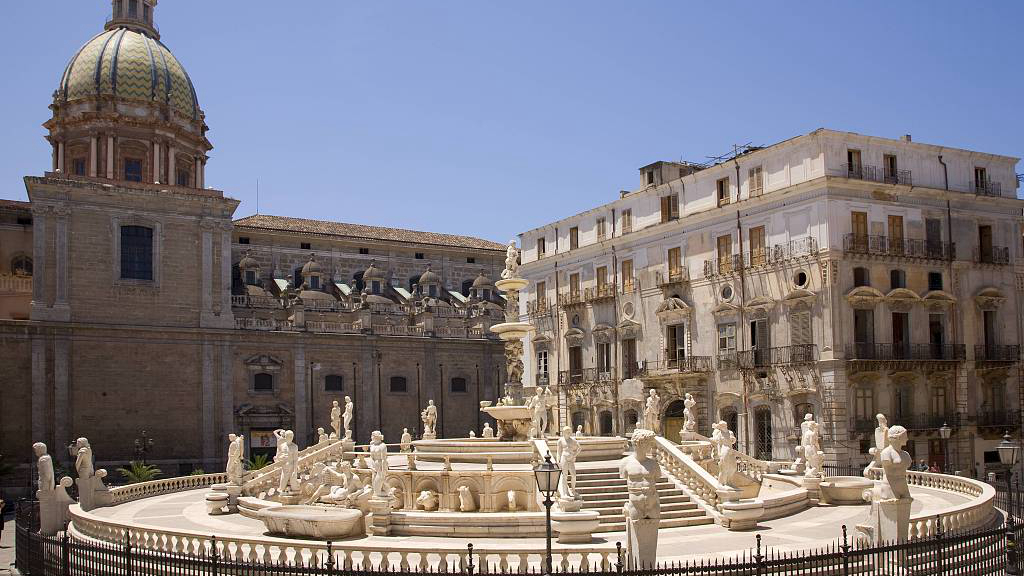
The Pretoria Fountain in Palermo City, Sicily, Italy. /VCG Photo
The Pretoria Fountain in Palermo City, Sicily, Italy. /VCG Photo
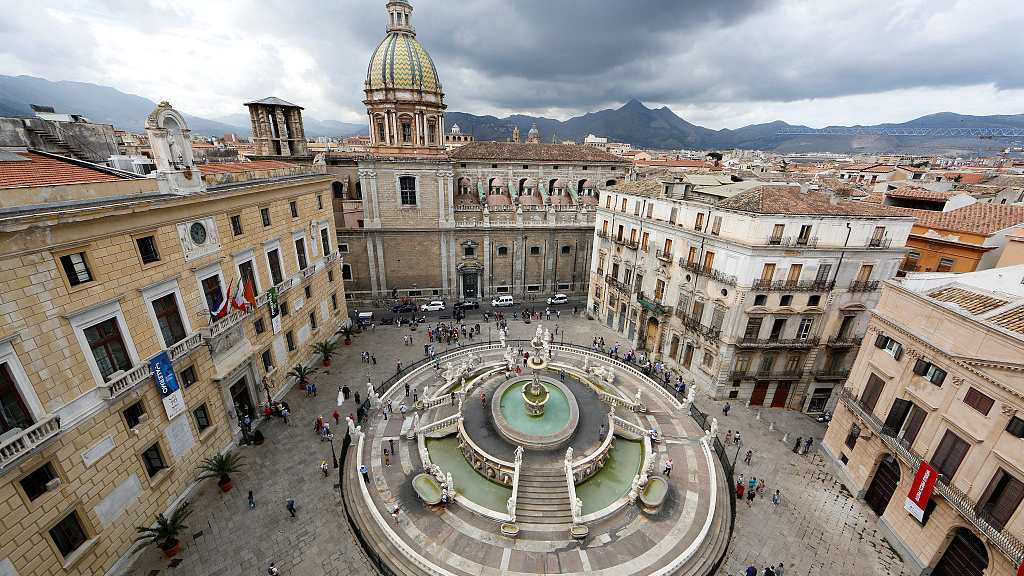
An aerial view of the Pretoria Fountain in Palermo City, Sicily, Italy. /VCG Photo
An aerial view of the Pretoria Fountain in Palermo City, Sicily, Italy. /VCG Photo
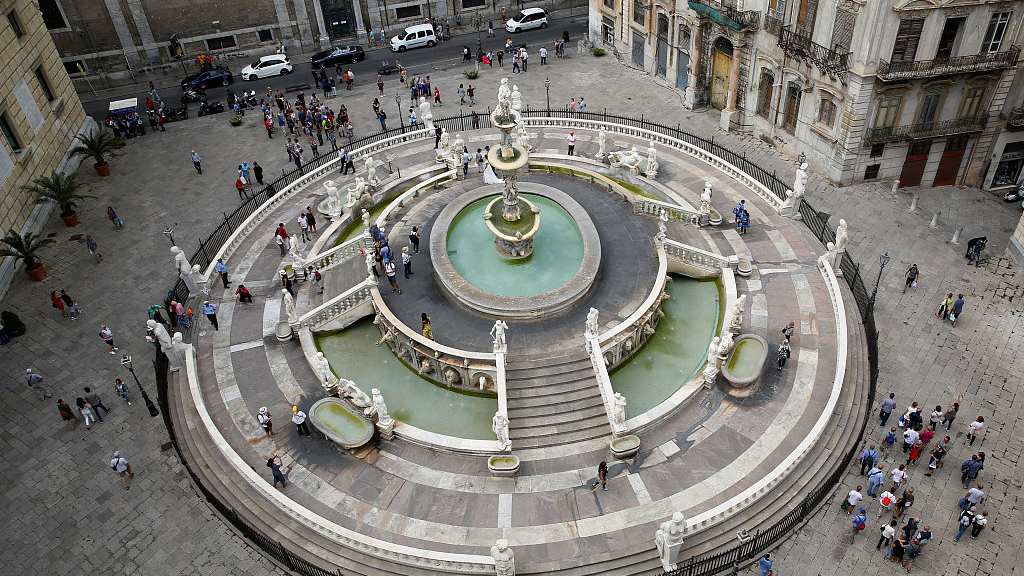
An aerial view of the Pretoria Fountain in Palermo City, Sicily, Italy. /VCG Photo
An aerial view of the Pretoria Fountain in Palermo City, Sicily, Italy. /VCG Photo
Mondello
Mondello is a small borough of Palermo in southern Italy. It is characterized by a sandy bay that connects Monte Gallo and Mount Pellegrino, with a coastline stretching 1.5 kilometers. There are all kinds of food stalls, bars and small restaurants by the seaside. You can also find delicious ice cream in the central square of Mondello.
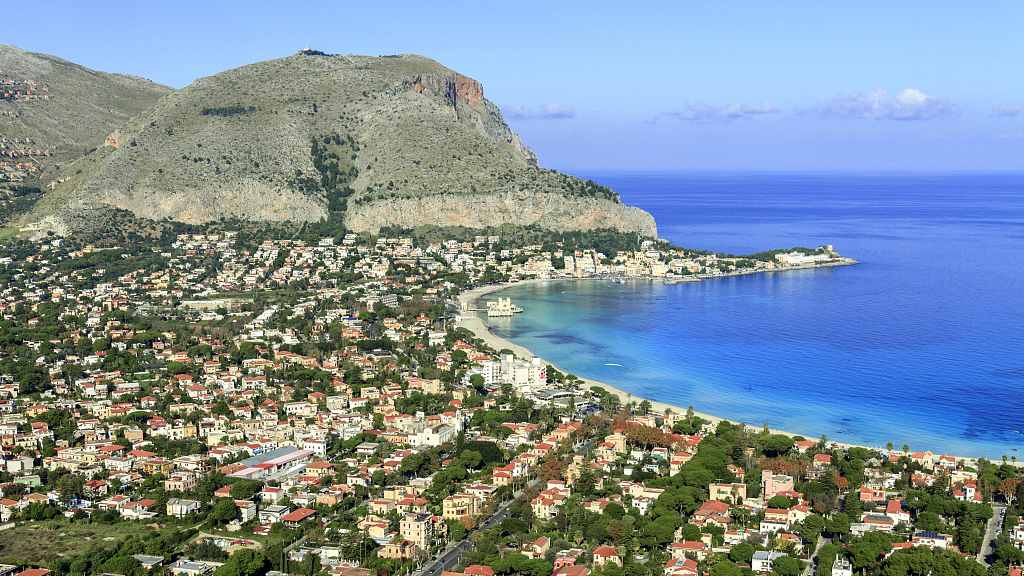
An aerial view of the Mondello seaside in Palermo City, Sicily, Italy. /VCG Photo
An aerial view of the Mondello seaside in Palermo City, Sicily, Italy. /VCG Photo
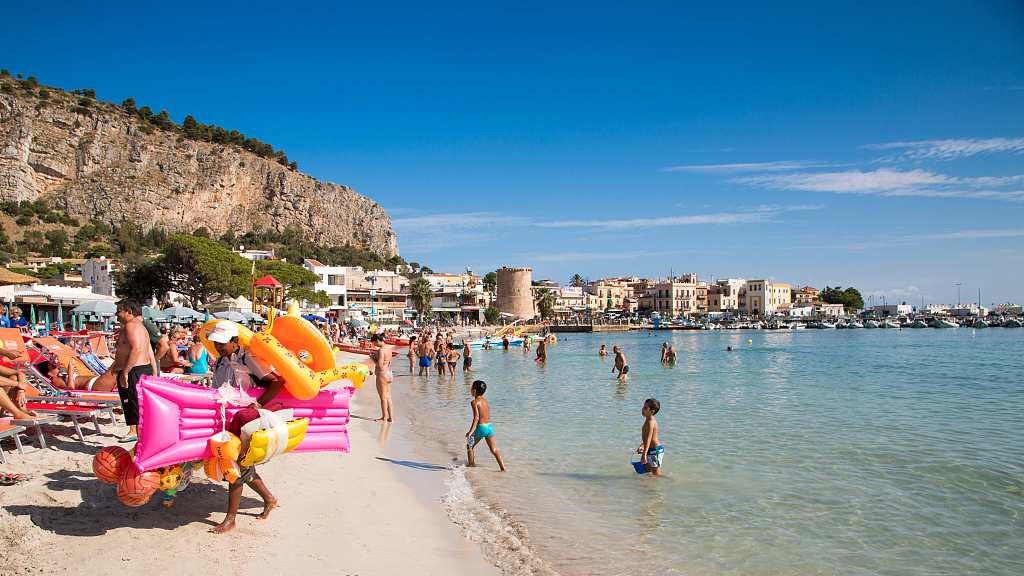
Tourists play at the seaside of Mondello in Palermo City, Sicily, Italy. /VCG Photo
Tourists play at the seaside of Mondello in Palermo City, Sicily, Italy. /VCG Photo
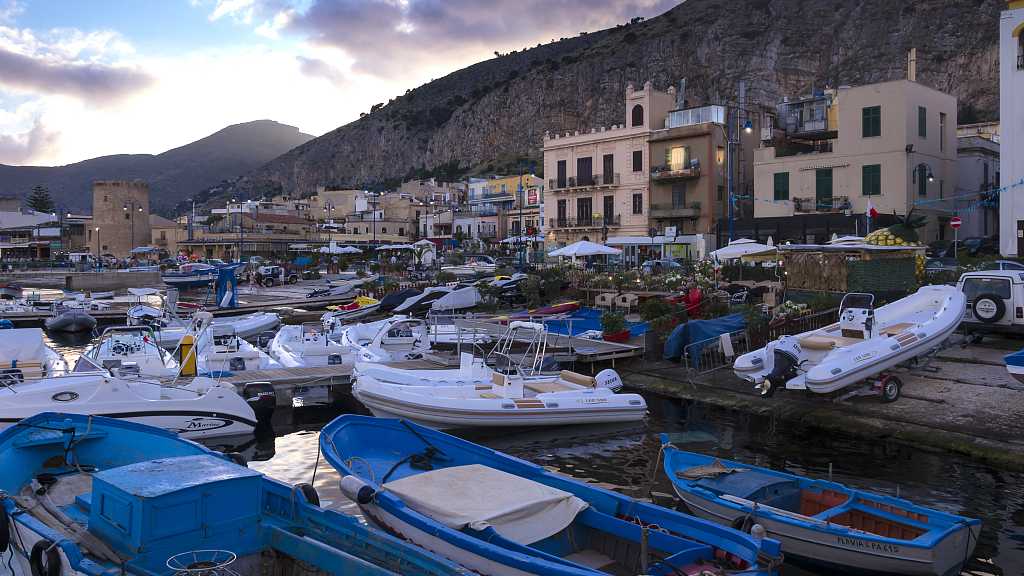
The boats at the seashore of Mondello in Palermo City, Sicily, Italy. /VCG Photo
The boats at the seashore of Mondello in Palermo City, Sicily, Italy. /VCG Photo
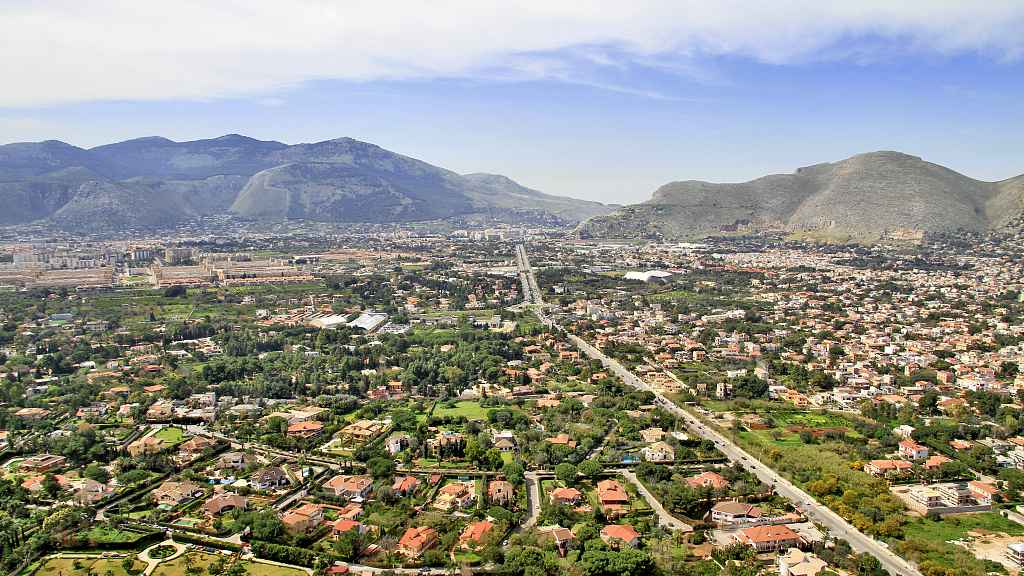
An aerial view of Mondello in Palermo City, Sicily, Italy. /VCG Photo
An aerial view of Mondello in Palermo City, Sicily, Italy. /VCG Photo
Quattro Canti
Quattro Canti, officially known as Piazza Vigliena, located at the crossing of the two principal streets in Palermo, the Via Maqueda and the Corso Vittorio Emanuele.
The four buildings are all symmetrical in Baroque style, and each building has three floors. From the bottom to the top floor, there are fountain sculptures representing the four seasons, four Spanish Kings of Sicily and four guardians of Palermo.
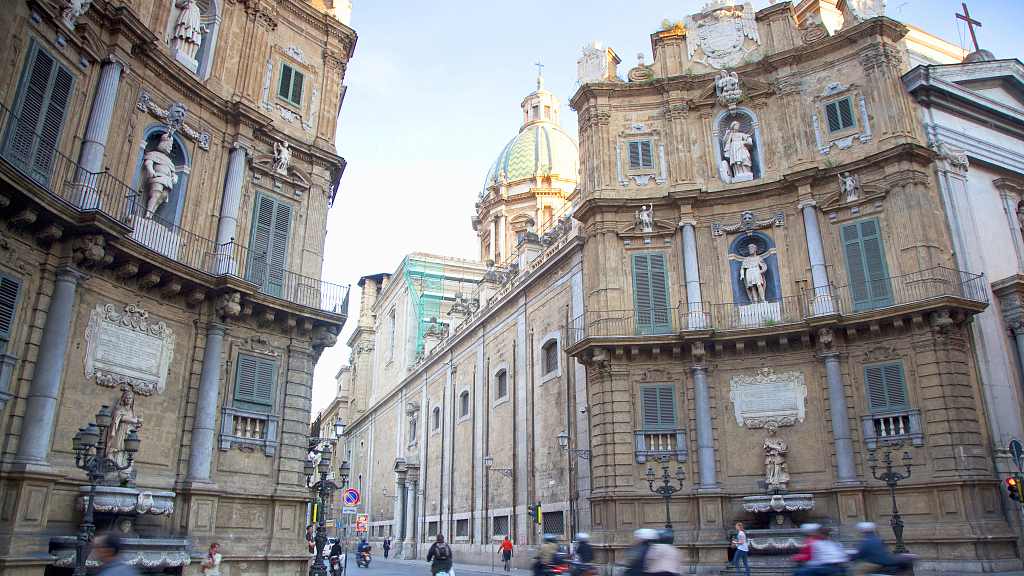
The Quattro Canti in Palermo City, Sicily, Italy. /VCG Photo
The Quattro Canti in Palermo City, Sicily, Italy. /VCG Photo
Norman Palace
The Norman Palace is the oldest royal residence in Europe located in the highest place of Palermo between the depressions of the rivers Kemonia and Papireto. The palace was the seat of the Kings of Sicily after the Normans invaded Sicily in 1072. Currently, it is the seat of the Sicilian Regional Assembly.
The Norman Palace is a wonderful example of the Arab-Norman-Byzantine style architecture, a fusion of three styles that became popular in Sicily in the 12th century and is now an important feature of Sicilian culture.
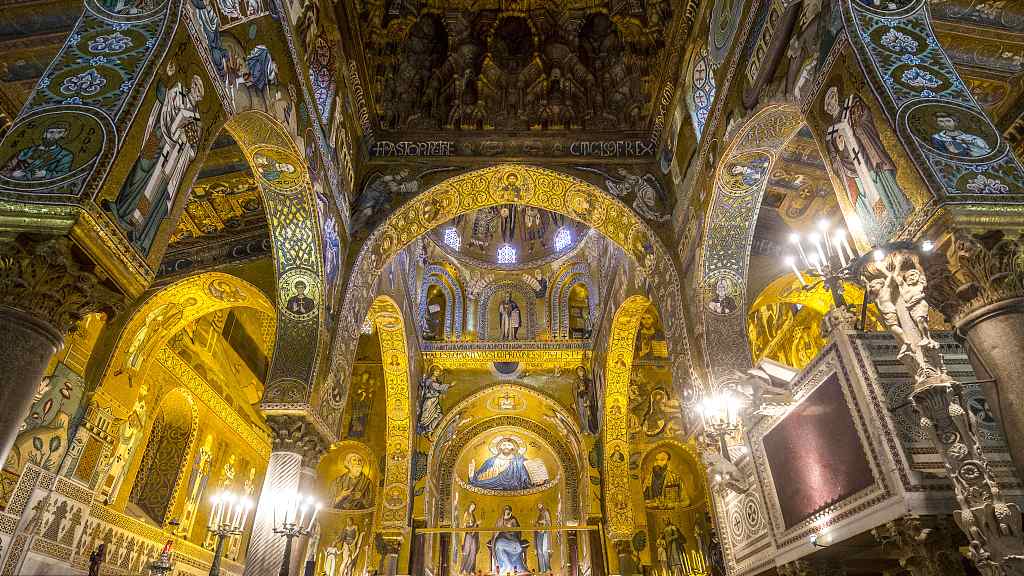
The interior view of the Norman Palace in Palermo City, Sicily, Italy. /VCG Photo
The interior view of the Norman Palace in Palermo City, Sicily, Italy. /VCG Photo
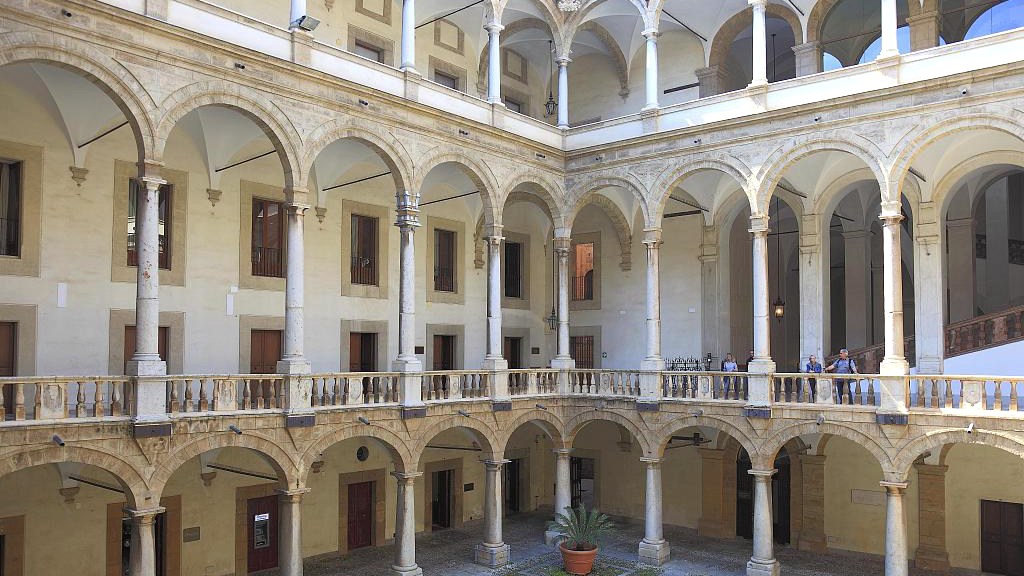
The Norman Palace in Palermo City, Sicily, Italy. /VCG Photo
The Norman Palace in Palermo City, Sicily, Italy. /VCG Photo
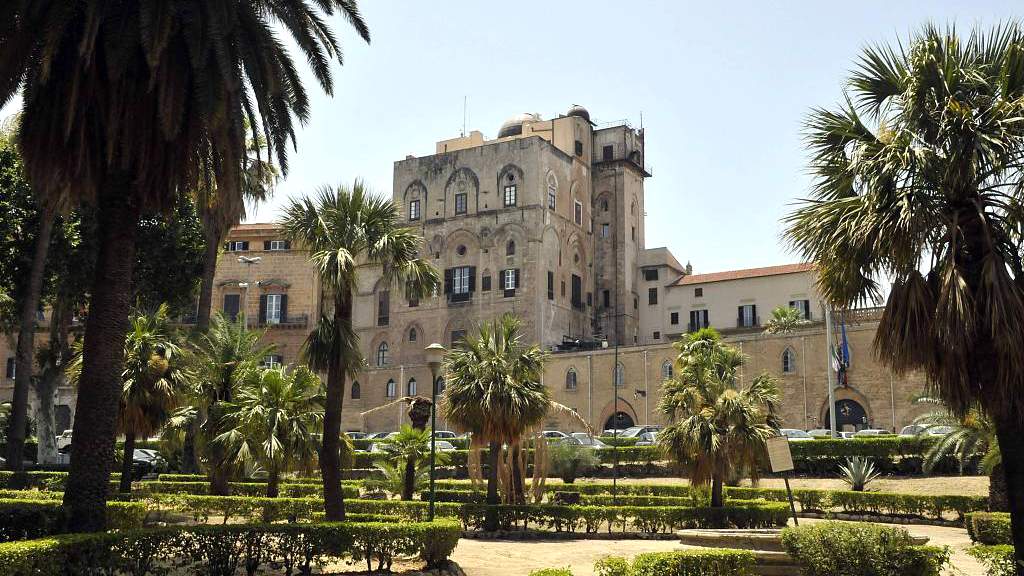
The Norman Palace in Palermo City, Sicily, Italy. /VCG Photo
The Norman Palace in Palermo City, Sicily, Italy. /VCG Photo
(Cover: Night view of the Palermo Cathedral in Palermo City, Sicily, Italy. /VCG Photo)

